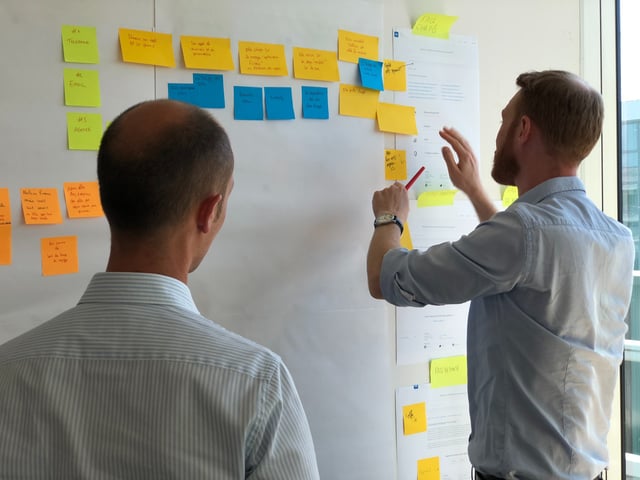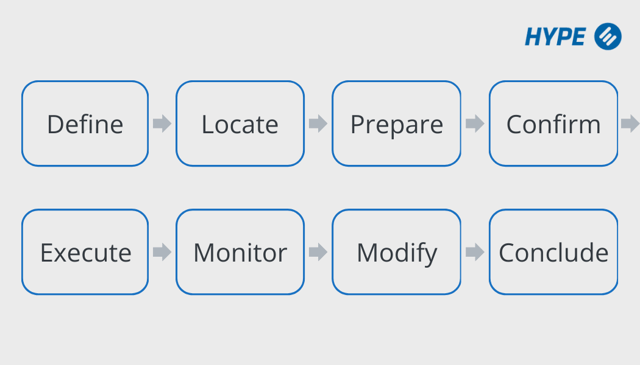Innovation usually relies on various methods like focus groups, interviews, surveys, and customer feedback to identify customer needs that haven’t yet been met. But do these methods uncover every customer requirement?
Simply meeting your customers’ needs without understanding the origin of those needs has several limitations because it fails to allow for a deeper examination of the real value for the customer. How can you identify your customers’ unmet needs and how can you determine their true potential value? The “jobs-to-be-done” theory offers an answer.
What is the “Jobs-to-be-Done” Approach?
The jobs-to-be-done (JTBD) concept in innovation and marketing focuses on understanding customers' underlying motivations and needs when they "hire" a product or service to perform a particular job or task in their lives. Instead of simply looking at the features or characteristics of a product, the JTBD concept dives into the functional and emotional aspects of why customers make certain choices.
The key idea is that customers "hire" products or services to do a job, and the better a product does that job, the more likely customers are to choose it and stick with it. The approach was popularized by Clayton Christensen, a professor at Harvard Business School, and his colleagues and introduced in the context of disruptive innovation in Christensen’s book, "The Innovator's Dilemma," published in 1997.

The Key Elements of the Jobs-to-be-Done Theory
The Jobs-to-be-Done Framework
In his groundbreaking Harvard Business Review article, “The Customer-Centered Innovation Map”, Tony Ulwick presents a jobs-to-be-done framework that describes the fundamentals of JTBD thinking in the field of innovation.
This framework enables companies to deconstruct into specific process steps a job that customers are trying to get done. The resulting job map provides a structure that makes it possible, for the first time, to capture all a customer’s needs and systematically identify growth opportunities.
The Job Map
A job map is a visual representation that breaks down into eight process steps for the specific job a customer is trying to complete. It aims to provide a structured and detailed view of the customer journey, highlighting each step involved in getting the job done.

The Idea in Brief
To systematically uncover more and better innovative ideas, Ulwick recommends using the JTBD framework to break down the job that customers want done into discrete steps, and then to brainstorm ways to make each step easier and faster, and to uncover any steps that are unnecessary.
For example, while cleaning clothes, people might not notice stubborn stains until they’ve taken the clothes from a dryer and started folding them up. If they find a stain, they must repeat the cleaning process. A washing machine that detects persistent stains and takes appropriate action before consumers execute the rest of the job might have a huge appeal.
Mapping a Customer Job
By interviewing customers and internal company experts, you can map a customer's job. You should start by understanding the execution step in order to establish the context and a frame of reference. You will also need to examine each step before execution, and then establish the role each step plays in getting the job done.
To ensure that you’re mapping job steps (what the customer is trying to accomplish) rather than process solutions (what’s currently being done), you need to ask yourself a series of validating questions at each step. In particular, you should:
- Define the execution step: What are the most central tasks that must be accomplished in getting the job done?
- Define pre-execution steps: What must happen before the core execution step to ensure the job is successfully carried out?
- Define post-execution steps: What must happen after the core execution step to ensure the job is successfully carried out?
What are the Benefits of the “Jobs-to-be-Done” Approach?
The JTBD approach is a powerful tool with many benefits for businesses:
- Customer-centric focus: Since the JTBD approach is based on meeting real customer needs, it helps companies create products and services that are more relevant to what customers value.
- Functional and emotional understanding: The approach allows businesses to design products that not only meet practical needs but also resonate emotionally with customers.
- Market opportunity identification: By understanding the "jobs" that customers are trying to do, businesses can identify new market opportunities. This can lead to the development of products or services that meet unmet needs in the market.
- Reduced risk of failure: The JTBD approach minimizes the likelihood of investing resources in innovations that don't align with customer priorities and needs.
- Long-term customer loyalty: By focusing on the job that customers do with the product, companies can create long-term relationships with their customers.
In essence, the JTBD approach provides a framework to build a detailed understanding of customer needs, enabling companies to create products that customers want and value.

Uncovering Opportunities for Innovation
Using the JTBD framework enables you to look systematically for opportunities to create value. The questions below can guide you in your search and help you to maximize your innovation potential. A great way to begin is to consider the biggest drawbacks of the current solution for meeting customers’ needs at each step in the job map, related, for example, to the speed of execution and the quality of output. To ensure the effectiveness of the JTBD approach, invite a diverse team of internal company experts in marketing, design, engineering, and even some customers, to participate in the process.
Opportunities at The Job Level
- Can the job be executed in a more efficient or effective sequence?
- Do some customers struggle more with executing the job than others (for instance, novices versus experts, older versus younger)?
- What issues do customers experience if they rely on multiple solutions to get the job done?
- Is it possible to eliminate the need for inputs or outputs from the job?
- Is it necessary that customers execute all the steps for which they are currently responsible? Can the burden be automated or shifted to someone else?
- What trends affect the way the job will be executed in the future?
- In what contexts do customers struggle most with executing the job today
- Where else or when else might customers want to execute the job?
Opportunities at The Step Level
- What causes variability (or unreliability) in executing this step? What causes execution to go off track?
- Do some customers struggle more than others with this step?
- What does this step’s ideal output look like, and in what ways is the current output less than ideal?
- Is this step more difficult to execute successfully in some contexts than others
- What are the biggest drawbacks of the current solutions used to execute this step?
- What makes executing this step time-consuming or inconvenient?
Summary
To identify opportunities for innovation, some companies focus on product leadership, some on operational excellence, and some on customer proximity. No matter what business model a company chooses, the fundamental basis for identifying growth opportunities is the same.
When companies recognize that customers “hire” products, services, software, and ideas to get jobs done, they can use the jobs-to-be-done approach to dissect those jobs and uncover the innovation opportunities that are the key to success.
At HYPE Innovation, we think the JTBD method is an exceptional tool for fostering growth and can offer you valuable support in implementing this approach. Our consultancy team would love to hear from you if you have any questions or would like to talk to us about how we can help.








